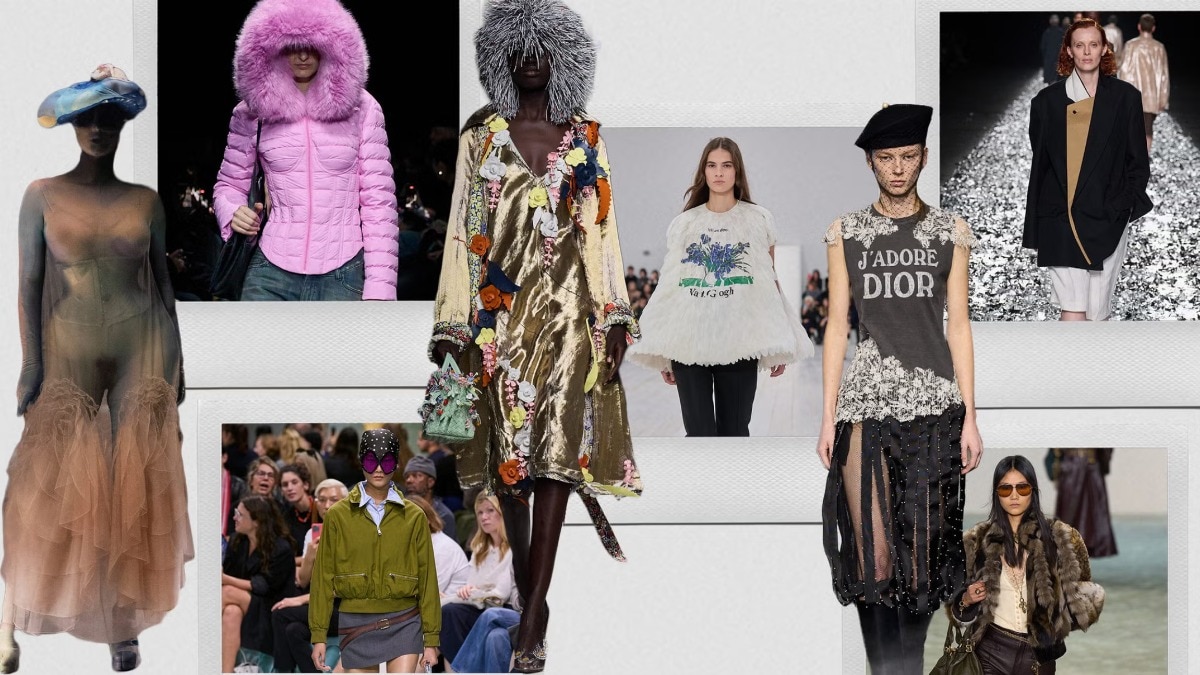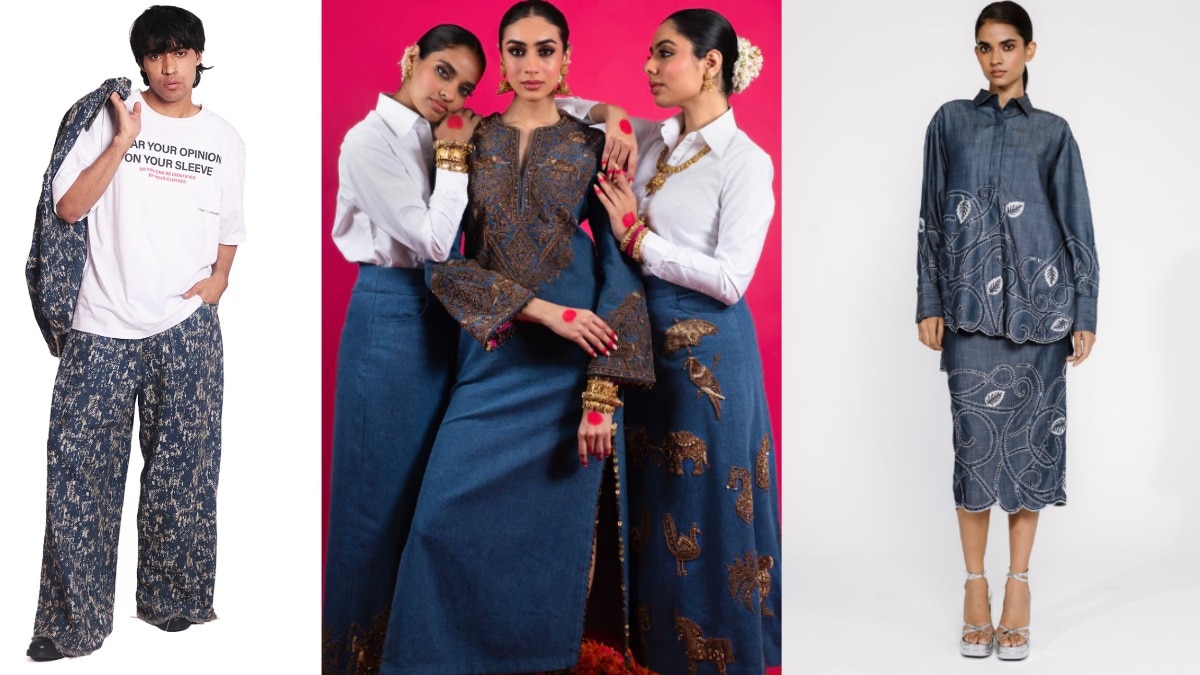
Women at the helm of five textile-forward fashion brands in India
With a keen eye for design and a passion for storytelling, these female leaders have transformed the narrative around Indian fashion.


In a vibrant tapestry of creativity and tradition, five remarkable women are shaping the landscape of Indian fashion with their visionary textile-forward brands. From embracing quiet luxury to celebrating rural inspirations, and sustainable ethos, read about the captivating narratives of Anavila Misra, Rina Singh, Palak Shah, Chinar Farooqui, and Gaurika Rai as they redefine Indian textiles, infusing them with contemporary allure and timeless elegance.
Anavila Misra founder, Anavila, Mumbai

If there is one brand in India that epitomises quiet luxury and slow fashion, it is Anavila. Designer Anavila Misra’s eponymous label focuses on the rich history of the Indian handloom industry, incorporating the same in its collections. Established in 2011, Anavila even made its couture debut in 2023. Here’s more from our interesting conversation with the designer.
Harper’s Bazaar: What inspired you to build a brand with a strong emphasis on textiles?
Anavila Misra: My inspiration is rooted in my love for crafts and the hand-made, offering endless opportunities for expression. My time at the Ministry of Rural Development deepened my understanding of Indian textiles at the grassroots, prompting me to apply design insights for a meaningful impact.
HB: What is your process for choosing the textiles for your new collections, and does cultural heritage play a role in this selection?
AM: We carefully select textiles through collaborations with skilled artisans, co-creating modern pieces rooted in tradition.
HB: What are some of the most innovative textile techniques or processes Anavila employs to create their designs?
AM: We infuse linen with zari, creating unique textures using extra weft techniques, and collaborate with hand appliqué artisans from Jharkhand for distinct linen saris. These practices highlight our steadfast commitment to innovation and craftsmanship.
HB: According to you, what are some of the most underrated textiles in India?
AM: Khadi is India’s most underrated textile.
HB: How does Anavila contribute to the empowerment of local artisans and weavers in the textile industry?
AM: We enter long-term partnerships with new clusters, ensuring meaningful improvements in communities. The progress in our core clusters over the years demonstrates our commitment to empowering artisans.
HB: What are some cultural elements or stories that consistently inspire your collections?
AM: Crafts and textiles are vehicles for cultural sustainability. Techniques like Dabu from the Bagru region showcase the enduring cultural legacy we aim to preserve and celebrate in our collections.
HB: How does your approach differ from that of fashion designers, who primarily emphasise craftsmanship versus textiles?
AM: Our brand’s dedication to minimalism, continuous innovation, and respect for craftsmanship resonates with our audience, distinguishing us in the fashion industry.
Rina Singh founder, Eka, Gurugram

Eka embodies designer Rina Singh’s commitment to simplicity, inspired by her agricultural upbringing, and deep understanding of textile design from exploring rural India. The designer speaks to us about innovative techniques, the label’s efforts to empower artisans, and much more.
Harper’s Bazaar: What is your story?
Rina Singh: Born in Kurukshetra to a family of agriculturists and educationists, my early years were immersed in weaving and artisanal activities. Raised in a childhood steeped in craft culture and community living, my studies in fashion naturally gravitated towards India’s rich ecosystem of crafts.
HB: What is your process for choosing the textiles for your new collections, and does cultural heritage play a role in this selection?
RS: Our commitment goes beyond fashion trends. Eka focuses on collaborating with families and weavers, and enduring partnerships. Travel, textile crafts, and community stories shape the Eka seasons documented in a fashion journal and campaigns.
HB: What are some of the most innovative textile techniques or processes Eka employs to create their designs?
RS: While we preserve existing crafts, we experiment with thread counts, yarns, motifs, and colour palettes. Our Summer 2024 collection features a collaboration with block printing, creating a textile canvas with 28 sets of blocks.
HB: How does Eka contribute to the empowerment of local artisans and weavers in the textile industry?
RS: In a decade, we have collaborated with 400-500 skilled weaver families, each comprising about six members. We ensure a minimum wage, provide consistent livelihoods, and upgrade their skills to meet evolving textile demands.
HB: How does your approach differ from that of fashion designers, who primarily emphasise craftsmanship versus textiles?
RS: Our approach blends textiles and craftsmanship. The challenge, however, is maintaining authenticity and avoiding fashion-centric narratives.
Palak Shah founder, Ekaya Banaras, Delhi

Ekaya Banaras, founded by Palak Shah, offers exquisite hand-woven Banarasi saris, blending traditional craftsmanship with modern designs, elevating the legacy of the textiles, cherished by connoisseurs worldwide. Here’s more from our conversation.
Harper’s Bazaar: What is your process for choosing the textiles for your new collections, and does cultural heritage play a role in this selection?
Palak Shah: We prioritise quality, sustainability, and aesthetics. Cultural heritage inspires us, influencing our designs with traditional textiles, motifs, and craftsmanship techniques, adding richness and depth.
HB: What are some of the most innovative textile techniques or processes Ekaya Banaras employs to create their designs?
PS: One of the techniques we pioneered is ‘Reverse Cutwork’ wherein the weavers create meticulous and intricate patterns by selectively removing threads from the fabric. It adds depth and texture creating visually captivating and tactilely engaging pieces.
HB: According to you, what are some of the most underrated textiles in India?
PS: Jamdani, Ikat, Uchchint, and Kalamkari are some of the underrated textiles.
HB: How does Ekaya Banaras contribute to the empowerment of local artisans and weavers in the textile industry?
PS: Ekaya pioneered a brand strategy fostering collaborations between artisans and designers, bridging the gap between Indian weavers and the global market. This model encourages skill enhancement, adapting to changing times, and meeting the needs of contemporary consumers.
HB: What are some cultural elements or stories that consistently inspire your collections?
PS: Growing up, I never saw a luxury handloom brand thrive in India. The concept of design and made-in-India textiles seemed alien. Inspired by our generations of craftsmanship and quality, I aspired to fill that void.
HB: How does your approach differ from that of fashion designers, who primarily emphasise craftsmanship versus textiles?
PS: What draws our audience is the elaborate narrative behind each textile, and the exceptional innovations highlighting the skills and artistry of the artisans who bring them to life.
Chinar Farooqui founder, Injiri, Jaipur

Founded by Chinar Farooqui, Injiri blends minimalist designs with traditional Indian textiles, emphasising sustainability. Their timeless pieces celebrate India’s cultural heritage through craftsmanship. Chinar lets us into her world of design.
Harper’s Bazaar: Tell us your story.
Chinar Farooqui: Growing up in rural Rajasthan, I had exposure to traditional garments, and I learned the importance of working with craft clusters at the National Institute of Design. These factors largely influenced the ethos of Injiri, which I established as a workshop in 2009.
HB: What is your process for choosing the textiles for your new collections, and does cultural heritage play a role in this selection?
CF: Our textile selection process is deeply rooted in preserving culture and sustaining artisan relationships. For example, the Spring/Summer 2024 collection ‘Jodhpur’ draws inspiration from Rajasthan’s cultural textile heritage, showcasing vibrant colours against the desert backdrop.
HB: What are some of the most innovative textile techniques or processes Injiri employs to create their designs?
CF: In 2019, we collaborated with the Bhujodi cluster to innovate woollen fabric structurally. We introduced a ‘Das Ghar’ reed in the loom, which causes the yarns to be further apart when woven and washed in warm water, thus giving it a much softer feel. We also integrate the ‘Atri’ gap on the loom in the textile itself to create spaced-out woollen fabrics. Our designs focus on fresh colour palettes and patchwork.
HB: According to you, what are some of the most underrated textiles in India?
CF: Simple quilts and tribal crafts.
HB: How does Injiri contribute to the empowerment of local artisans and weavers in the textile industry?
CF: Injiri prioritises sustaining crafts by offering fair compensation, enhancing traditional craftsmanship, and promoting skill development.
HB: What are some cultural elements or stories that consistently inspire your collections?
CF: The Bhujodi turban weavers’ rich history intertwines with our brand’s essence. Additionally, the culture, connections, and stories of communities like Ahir, Vankar, and Rabaris inspire us.
HB: How does your approach differ from that of fashion designers, who primarily emphasise craftsmanship versus textiles?
CF: Injiri prioritises fabric-making through weaving rather than surface ornamentation. Our production process, which takes about two years, emphasises innovation within craft techniques and is not dictated by fashion trends.
Gaurika Rai CEO, Warp ‘N Weft, Mumbai

Founded by Sagrika Rai, Warp ‘N Weft focuses on sustainable fashion with handcrafted clothing and accessories emphasising ethics and environmental consciousness. Gaurika Rai, the CEO and designer narrates to us the label’s story, and how it balances craftsmanship with innovations.
Harper’s Bazaar: What inspired you to build a brand with a strong emphasis on textile?
Gaurika Rai: I noticed a growing love for authentic art in Mumbai and simultaneously observed the fading of traditional Banarasi weaving. This inspired me to preserve the unique artistry of Banarasi textiles.
HB: What is your process for choosing the textiles for your new collections, and does cultural heritage play a role in this selection?
GR: Our academic approach focuses on blending tradition with modern accents. Inspired by Indian heritage, history, nature, and global trends, we prioritise customer comfort and mood in our artistic endeavours.
HB: What are some of the most innovative textile techniques or processes Warp ‘N Weft employs to create their designs?
GR: Handloom is our main focus. We work closely with our artisans, constantly pushing boundaries and exploring new possibilities in Banaras weaving. We experiment with textures and techniques through isolation, intermingling, interconnecting, overlapping, and layering.
HB: How do you balance craftsmanship with textile innovations in your collections?
GR: Our GI certification is proof of our ongoing dedication to support Banaras handloom weavers. It verifies our efforts in promoting the well-being and sustainability of this community.
HB: What are some cultural elements or stories that consistently inspire your collections?
GR: Our inspiration springs from captivating stories. For instance, the ‘Chakradhara’ collection, launched in 2022 with the Ministry of Textiles and FDCI, paid homage to the Royal Indian Tiger. It underscores the significance of conserving our ecosystem, intertwining national pride, heritage, handloom, and the sustainability of Indian crafts and reserves.
Feature image credit: @injiri/Instagram
Also Read: A journey into the world of Odisha’s timeless Khandua sari










